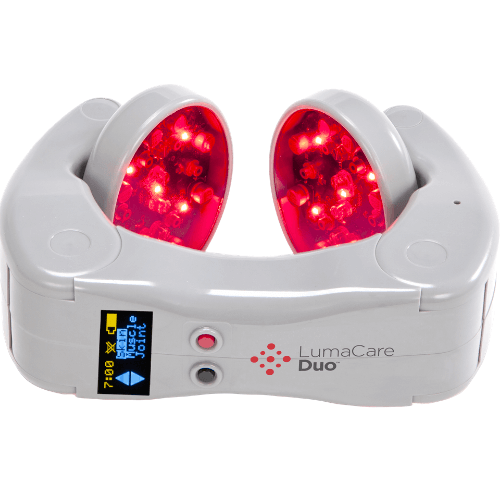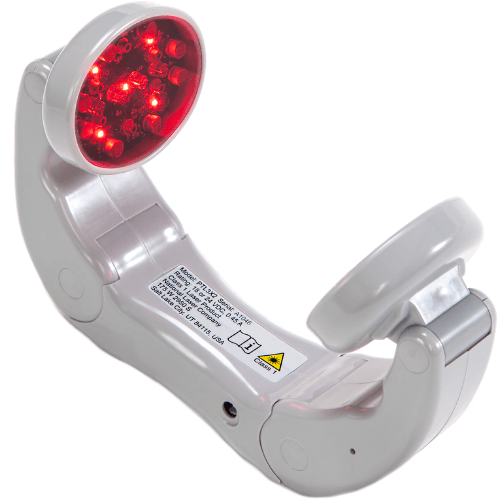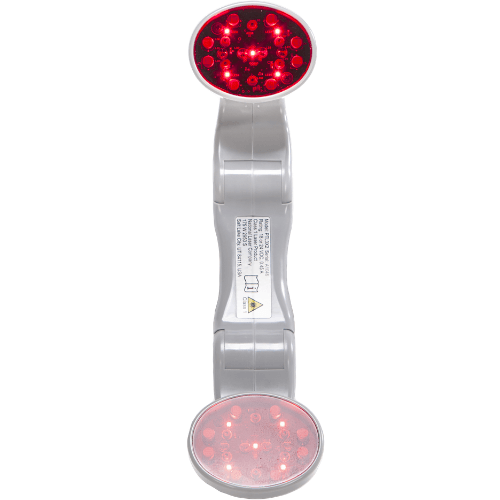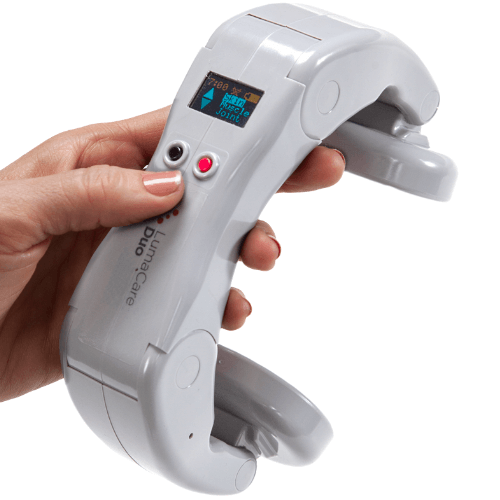Duo Cold Laser Therapy For Pain & Injury
The LumaCare Duo™ is the first handheld Low Level Laser Therapy (LLLT) system to utilize two emitter heads instead of one.
Advanced therapeutic laser to treat acute pain & chronic injuries.
Many users will be able to see faster results and save time with its pulsing, triple wavelength Cold Laser solution.
Users can adjust the two articulating arms and the dual rotational emitter heads of the patented LumaCare Duo™ to treat various injury locations.
Therapeutic laser light can be directed at the injured tissue from two directions at the same time. Having two emitter heads also allows LumaCare Duo users to focus more Infrared and visible Red light over a wider area. Users may also choose to implement only one emitter head as desired.
Cold Laser Therapy Benefits and Trials From Harvard School Of Medicine
Cold lasers
Low-level lasers (LLL)—sometimes called cold lasers— emit low-powered laser light that does not heat its target tissue. LLL has been used to improve wound healing, relieve pain and treat conditions including stroke and neurodegenerative disorders.
LLL is also known to protect the function of mitochondria, cellular structures that provide cells with energy. Several conditions associated with impaired platelet production are characterized by abnormalities in mitochondria of the bone marrow cells that give rise to platelets.
The body responds to low platelet levels by rapid differentiation of the precursor MKs from hematopoietic stem cells. There is also an exponential increase in the number of the cells.
MKs expand in size. Many rounds of DNA replication without cellular division result in giant cells containing multiple copies of each chromosome—a condition called polyploidy—instead of the two copies found in most cells.
Each of these giant, polyploid MKs generates many long, branched, small tubular structures called proplatelets that eventually fragment into thousands of platelets.
🔴Lumacare Duo Cold Laser Therapy For Pain & Injury Is not covered by insurance or Medicaid🔴
Protection
The research team conducted a number of experiments to investigate whether LLL’s ability to protect mitochondrial function could mitigate several forms of thrombocytopenia. Their results showed:
- LLL treatment of MKs increased their size, accelerated the formation of proplatelets and doubled the production of platelets. Infusion of LLL-treated MKs into mice led to greater platelet production than did infusion of MKs treated with normal light.
- One of the keys to determining the number of platelets generated from MKs was mitochondrial production of the energy molecule ATP (adenosine triphosphate).
- LLL treatment greatly increased mitochondrial generation in polyploid MKs, but the increase was only slight in less mature MKs with only two copies of each chromosome.
- Whole-body LLL treatment of mice with radiation-induced thrombocytopenia induced the rapid maturation of MKs and restored platelet levels in a light-dose-dependent fashion. Platelets from LLL-treated mice had normal structure and function. LLL treatment of normal mice did not raise levels of either MKs or platelets.
- LLL treatment also restored platelet levels in mice with the autoimmune form of thrombocytopenia or with thrombocytopenia caused by chemotherapy treatment.
- In cultured human MKs, LLL treatment at dosage levels similar to those used in mice increased ATP production and platelet generation.
Wu noted that LLL’s lack of an effect in animals without thrombocytopenia indicates it would probably avoid the potential complications of current drug treatments, which act by increasing the production of MKs from their progenitors in the bone marrow.
“Directly stimulating the differentiation of MKs the way all current drugs do risks clotting if platelet levels rise too high,” Wu said. “LLL appears to enhance MKs’ inherent ability to produce platelets most effectively in response to low platelet levels in the circulation, a response that stops when platelet levels are normalized.”
Mitochondrial biogenesis
The fact that treatment has an effect only in polyploid cells, which are very rare, implies that it would not increase production of mitochondrial in cancer cells or other cells, Wu said. While LLL has been employed in research and in clinical treatment for decades, this is the first study reporting that it can promote mitochondrial biogenesis.
Wu said the current primary obstacle to testing LLL in human patients is the lack of a device large enough to treat either the entire body or enough bones to stimulate sufficient platelet production by MKs within the bone marrow—something her team plans to address. She also added that, while LLL will probably be beneficial for treatment of many forms of acquired thrombocytopenia, it may not be effective when the condition is caused by inborn genetic defects.
The study was funded in part by Department of Defense/Air Force Office of Scientific Research Military Photomedicine Program grant FA9550-13-1-0068. A patent application has been filed for the use of LLL treatment to enhance platelet biogenesis and extend platelet lifespan.









